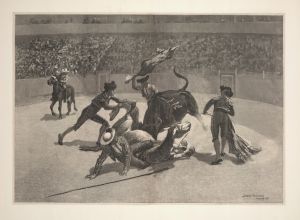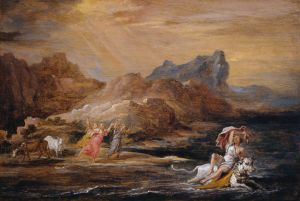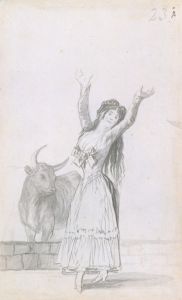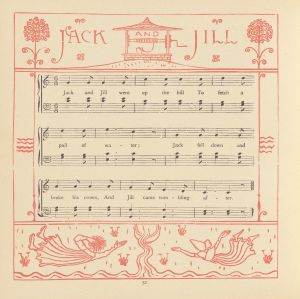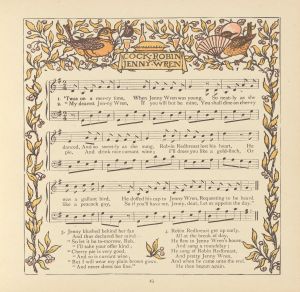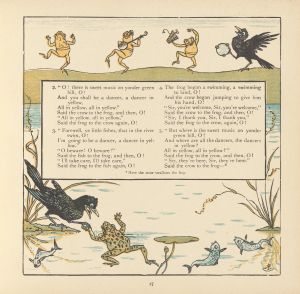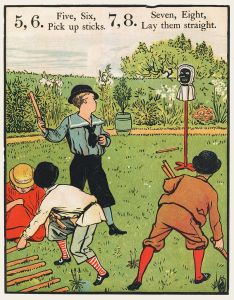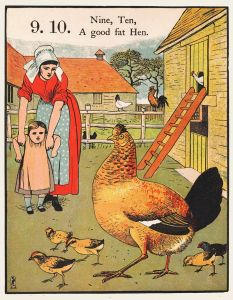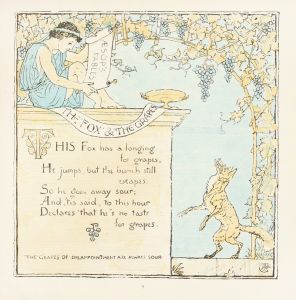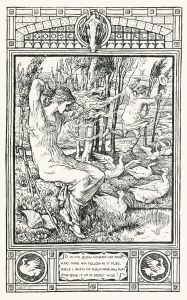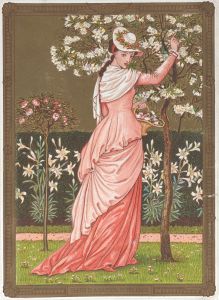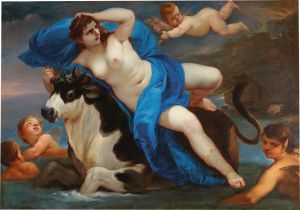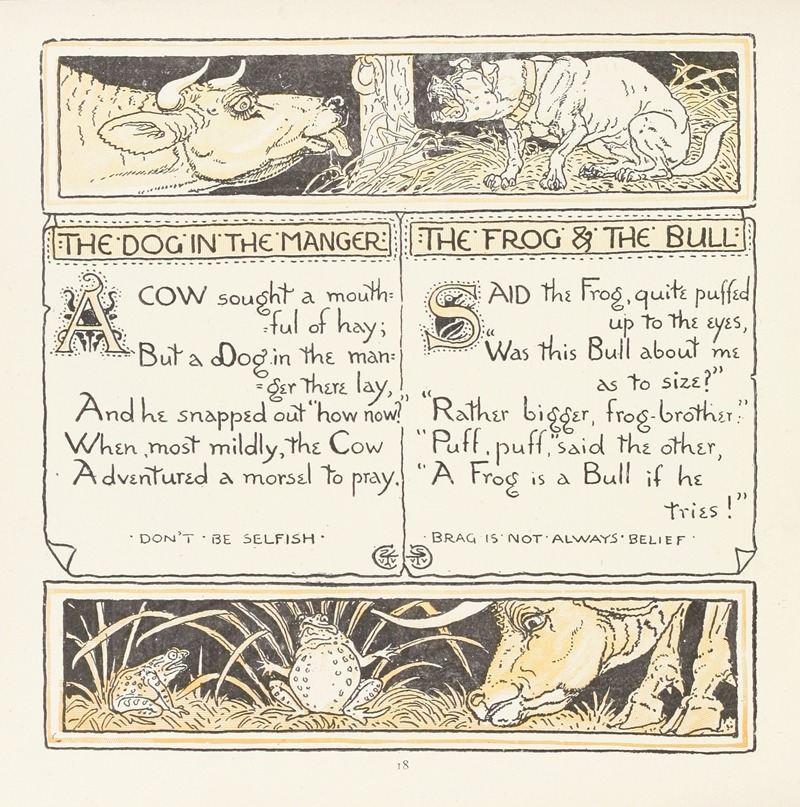
The Dog in the Manger, The Frog and the Bull
A hand-painted replica of Walter Crane’s masterpiece The Dog in the Manger, The Frog and the Bull, meticulously crafted by professional artists to capture the true essence of the original. Each piece is created with museum-quality canvas and rare mineral pigments, carefully painted by experienced artists with delicate brushstrokes and rich, layered colors to perfectly recreate the texture of the original artwork. Unlike machine-printed reproductions, this hand-painted version brings the painting to life, infused with the artist’s emotions and skill in every stroke. Whether for personal collection or home decoration, it instantly elevates the artistic atmosphere of any space.
Walter Crane was a prominent English artist and book illustrator, known for his contributions to the Arts and Crafts Movement and his innovative work in children's book illustrations. Among his many works, "The Dog in the Manger, The Frog and the Bull" stands out as an exemplary piece that showcases his unique style and artistic philosophy.
Walter Crane was born on August 15, 1845, in Liverpool, England. He was heavily influenced by the Pre-Raphaelite Brotherhood and the ideals of the Arts and Crafts Movement, which emphasized traditional craftsmanship and the decorative arts. Crane's work often featured elaborate designs, vibrant colors, and a strong narrative quality, which made him a favorite among both children and adults.
"The Dog in the Manger, The Frog and the Bull" is a part of Crane's series of illustrations for Aesop's Fables. Aesop's Fables are a collection of stories credited to Aesop, a storyteller believed to have lived in ancient Greece. These fables are characterized by their moral lessons, often conveyed through anthropomorphic animals. Crane's illustrations for these fables were published in various editions during the late 19th century, and they played a significant role in popularizing these timeless stories.
In "The Dog in the Manger," Crane illustrates the fable of a dog who selfishly occupies a manger, preventing the oxen from eating the hay, despite having no use for it himself. This fable teaches the moral lesson about the folly of begrudging others what one cannot enjoy oneself. Crane's depiction of this story is both vivid and expressive, capturing the essence of the fable's message through his detailed and colorful artwork.
"The Frog and the Bull" is another fable illustrated by Crane, which tells the story of a frog who, in an attempt to become as large as a bull, puffs himself up until he bursts. This fable imparts a lesson about the dangers of vanity and overambition. Crane's illustration effectively conveys the humor and tragedy of the frog's plight, using his characteristic style to bring the story to life.
Crane's illustrations for Aesop's Fables are notable for their intricate designs and the way they complement the narratives. His work often included decorative borders and elements that enhanced the storytelling experience, making the fables more engaging for readers. Crane's ability to blend art with narrative was a hallmark of his career, and his work on Aesop's Fables remains a testament to his skill and creativity.
Walter Crane's contributions to the world of art and illustration were significant, and his work continues to be celebrated for its beauty and impact. His illustrations for "The Dog in the Manger, The Frog and the Bull" are a prime example of his talent for bringing stories to life through art. These illustrations not only capture the moral lessons of Aesop's Fables but also reflect Crane's dedication to the principles of the Arts and Crafts Movement, emphasizing the importance of craftsmanship and artistic integrity.





